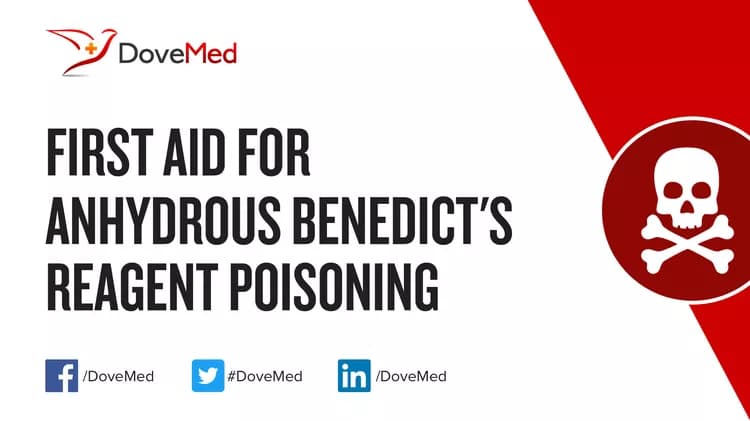
First Aid for Anhydrous Benedict's Reagent Poisoning
The topic First Aid for Anhydrous Benedict's Reagent Poisoning you are seeking is a synonym, or alternative name, or is closely related to the topic First Aid for Clinitest Tablets Poisoning.
Please find relevant information on First Aid for Anhydrous Benedict's Reagent Poisoning regarding cause, signs & symptoms, administration of first aid treatment, prognosis, preventive measures, and additional resources HERE.
Quick Summary:
- Clinitest tablets are specialized pills that are used to check one’s diabetes control. These tablets are placed in fresh samples of urine to determine the level of glucose in them
- Clinitest Tablets Poisoning is the accidental or intentional intake of Clinitest tablets. These tablets are not meant for consumption
- The condition is diagnosed based upon the clinical history, combination of signs and symptoms, and additional tests (that may include, in some cases, radiological studies and laboratory tests)
Note:
- In case of an emergency, call 911 (or your local emergency number) for assistance
- In case of poisoning, call National Poison Control Center at 800-222-1222 (or your local poison control center) and follow instructions
- Provide them with information such as dosage, type, strength and time of ingestion of medication, age, weight and general health status of affected individual
What are some Useful Resources for Additional Information on Anhydrous Benedict's Reagent Poisoning?
National Capital Poison Center (USA)
3201 New Mexico Ave, Suite 310 Washington, DC 20016
Administrative Line: (202) 362-3867
Emergency Line: 1 (800) 222-1222
Fax: (202) 362-8377
Email: pc@poison.org
Website: http://www.poison.org
American Association of Poison Control Centers (USA)
515 King St., Suite 510, Alexandria, VA 22314
Phone: (703) 894-1858
Email: info@aapcc.org
Website: http://www.aapcc.org
References and Information Sources used for Anhydrous Benedict's Reagent Poisoning:
https://medlineplus.gov/ency/article/002611.htm (accessed on 09/24/2017)
https://www.ncbi.nlm.nih.gov/pubmed/6691751 (accessed on 09/24/2017)
http://www.srmuniv.ac.in/sites/default/files/downloads/CLINICAL_TOXICOLOGY.pdf (accessed on 09/24/2017)
https://www.fda.gov/ForConsumers/ConsumerUpdates/ucm253338.htm (accessed on 09/24/2017)
Helpful Peer-Reviewed Medical Articles for Anhydrous Benedict's Reagent Poisoning:
Johnson, B. Y., Edington, J., & O’Keefe, M. J. (2003). Effect of coating parameters on the microstructure of cerium oxide conversion coatings. Materials Science and Engineering: A, 361(1), 225-231.
Cook, D., Welch, K. D., Green, B. T., Gardner, D. R., Pfister, J. A., Constantino, J. R., & Stonecipher, C. A. (2015). The relative toxicity of Delphinium stachydeum in mice and cattle. Toxicon, 99, 36-43.
Sharma, S. (2007). Experiments and techniques in biochemistry. Galgotia Publications.
Green, B. T., Welch, K. D., Gardner, D. R., Stegelmeier, B. L., Pfister, J. A., Cook, D., & Panter, K. E. (2012). Toxicokinetics of norditerpenoid alkaloids from low larkspur (Delphinium andersonii) orally administered to cattle. American journal of veterinary research, 73(8), 1318-1324.
Cook, D., Lee, S. T., Gardner, D. R., Pfister, J. A., Welch, K. D., Green, B. T., ... & Panter, K. E. (2009). The alkaloid profiles of Lupinus sulphureus. Journal of agricultural and food chemistry, 57(4), 1646-1653.
Related Articles
Test Your Knowledge
Asked by users
Related Centers
Related Specialties
Related Physicians
Related Procedures
Related Resources
Join DoveHubs
and connect with fellow professionals

0 Comments
Please log in to post a comment.